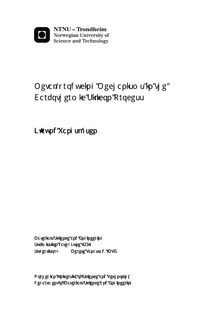Metal-producing Mechanisms in the Carbothermic Silicon Process
Master thesis
Permanent lenke
http://hdl.handle.net/11250/249099Utgivelsesdato
2012Metadata
Vis full innførselSamlinger
Sammendrag
The mechanisms in the carbothermic production of silicon have been examined in this report. Through the investigation of a pilot scale furnace as well as five small scale induction furnace experiments, a better understanding of this comlex process has been obtained. Especially the silicon producing reactions and mechanisms have been studied.Samples of all raw material as they travelled downwards in the pilot scale furnace was investigated along with samples from the induction furncace. SiO gas formed in the hot zone (2000 °C) travelled upwards and deposited as a condensate mixture of SiO2 and Si. In the pilot scale furnace this condensate went back down with raw material as the furnace was stoked or the raw materials slowly melted. The condensate decomposed as the temperatures increased; silicon accumulated and escaped from the SiO2-matrix in the condensate.A typical experiment conducted in the induction furnace had a specic power consumption of roughly 62 MWh per ton silicon produced, far more than normal industrial power consumption of 11-13 MWh per ton Si produced. Mass balance demonstrated that just over half of the silicon produced were left in the silicon pool in the bottom of the crucible. The other mere half had to end as silicon droplets in the condensate deposited in the upper portion of the crucible.The main silicon producing reaction is: SiO(g) + SiC(s) = 2Si(s,l) + CO(g), but the findings in this thesis have shown that the perspiration of silicon from the condensate is very important. A significant contribution to the total amount of silicon produced can therefore come from the following reaction: 2SiO(g) = SiO2(s,l)+ Si(s,l)Compression tests have been made on the agglomerate caused by the deposits of condensate (SiO2+Si). The compression strength varied from 115 to 396 MPa. Samples exposed to temperatures above 1670 °C had the lowest strenght, while those exposed to lower temperatures were the strongest.
